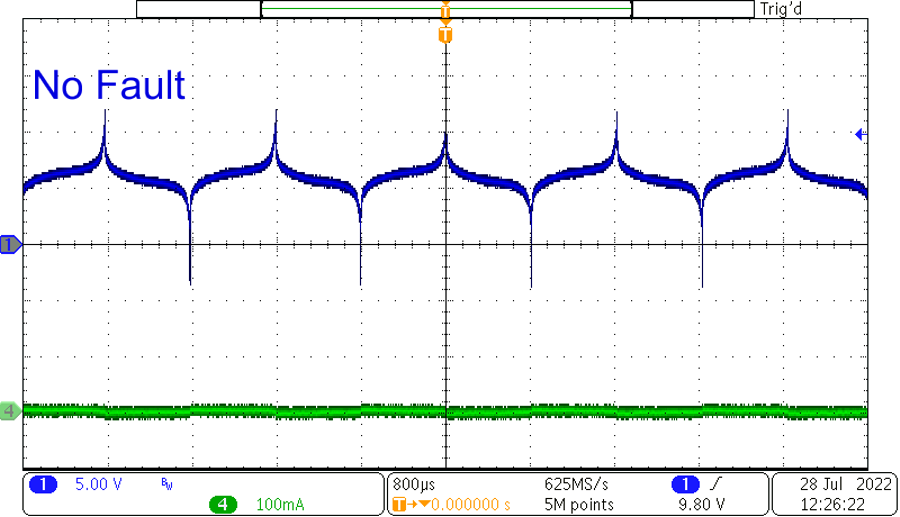JAJU857 December 2022
- 概要
- リソース
- 特長
- アプリケーション
- 5
- 1System Description
- 2System Overview
-
3Hardware, Software, Testing Requirements, and Test Results
- 3.1
Hardware
- 3.1.1 Board Overview
- 3.1.2 Filter Stage
- 3.1.3 Differential to Single-Ended Converter
- 3.1.4 Low-Pass Filter
- 3.1.5 Full-Wave Rectifier
- 3.1.6 DC Offset Circuit
- 3.1.7 Auto-Oscillation Circuit
- 3.1.8 DRV8220 H-Bridge
- 3.1.9 Saturation Detection Circuit
- 3.1.10 H-Bridge Controlled by DFF
- 3.1.11 MCU Selection
- 3.1.12 Move Away From Timer Capture
- 3.1.13 Differentiating DC and AC From the Same Signal
- 3.1.14 Fluxgate Sensor
- 3.2 Software Requirements
- 3.3 Test Setup
- 3.4 Test Results
- 3.5 Fault Response Results
- 3.1
Hardware
- 4Design and Documentation Support
- 5About the Author
3.1.9 Saturation Detection Circuit
The saturation detection circuit is made of the low-side current sense resistor (R7), current sense amplifier INA293, and comparator TLV7011. The comparator outputs high when the fluxgate sensor coil saturation is reached.
This circuit is used to determine when the fluxgate sensor has reached saturation.
 Figure 3-13 Saturation Detection Schematic
Figure 3-13 Saturation Detection SchematicVSENSE is read from the low-side shunt resistor of the DRV8220. VSENSE gives the current through the fluxgate sensor coil. This signal is gained by current sense amplifier INA293, with a fixed gain of 20 V/V. The gained signal is compared to a reference voltage VREF of 500 mV which is sourced from a resistor divider. When the current sense signal passes the VREF voltage, the core has saturated and the DRV8220 must swap output directions. The output of comparator TLV7011 feeds into a DFF which is explained more in the H-Bridge Controlled by DFF section.

Figure 3-14 Burden Resistor Going Into Saturation